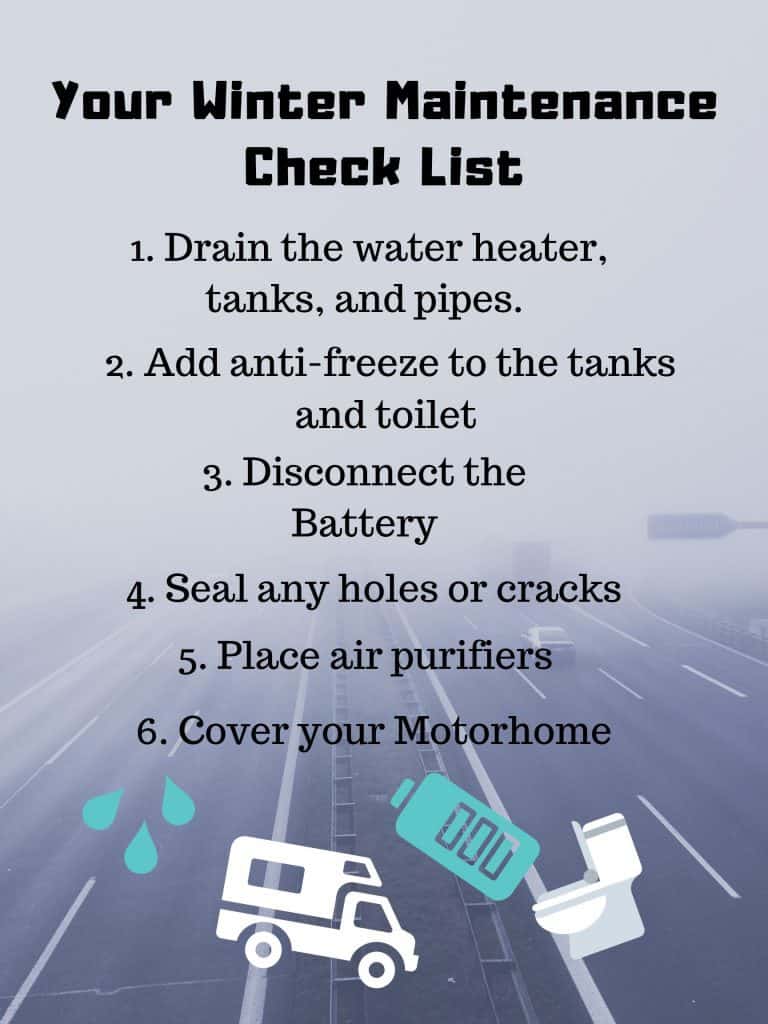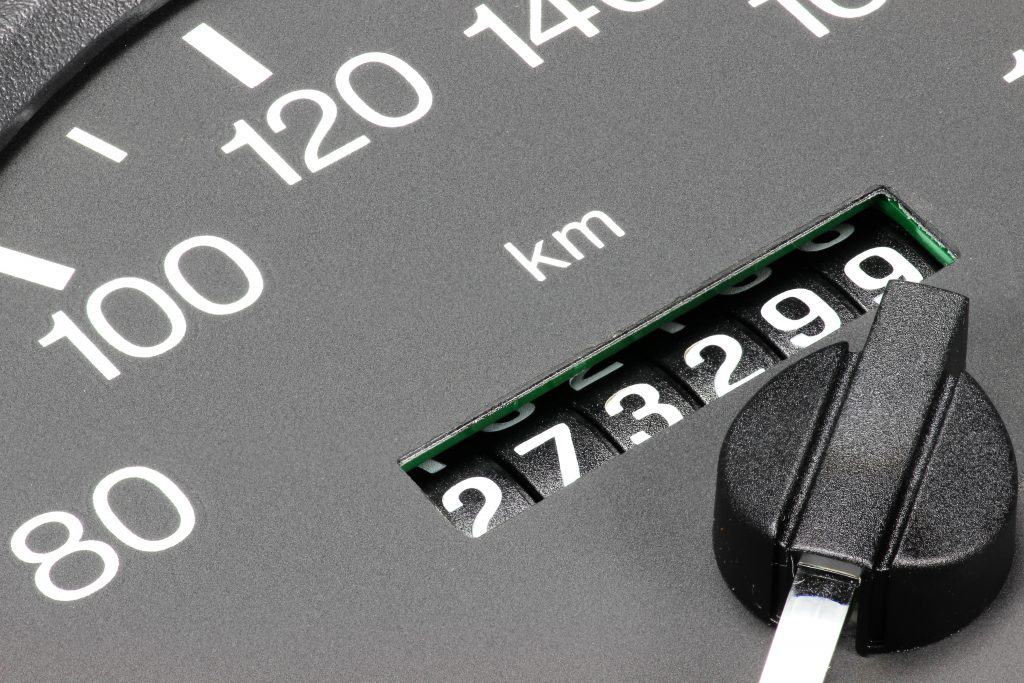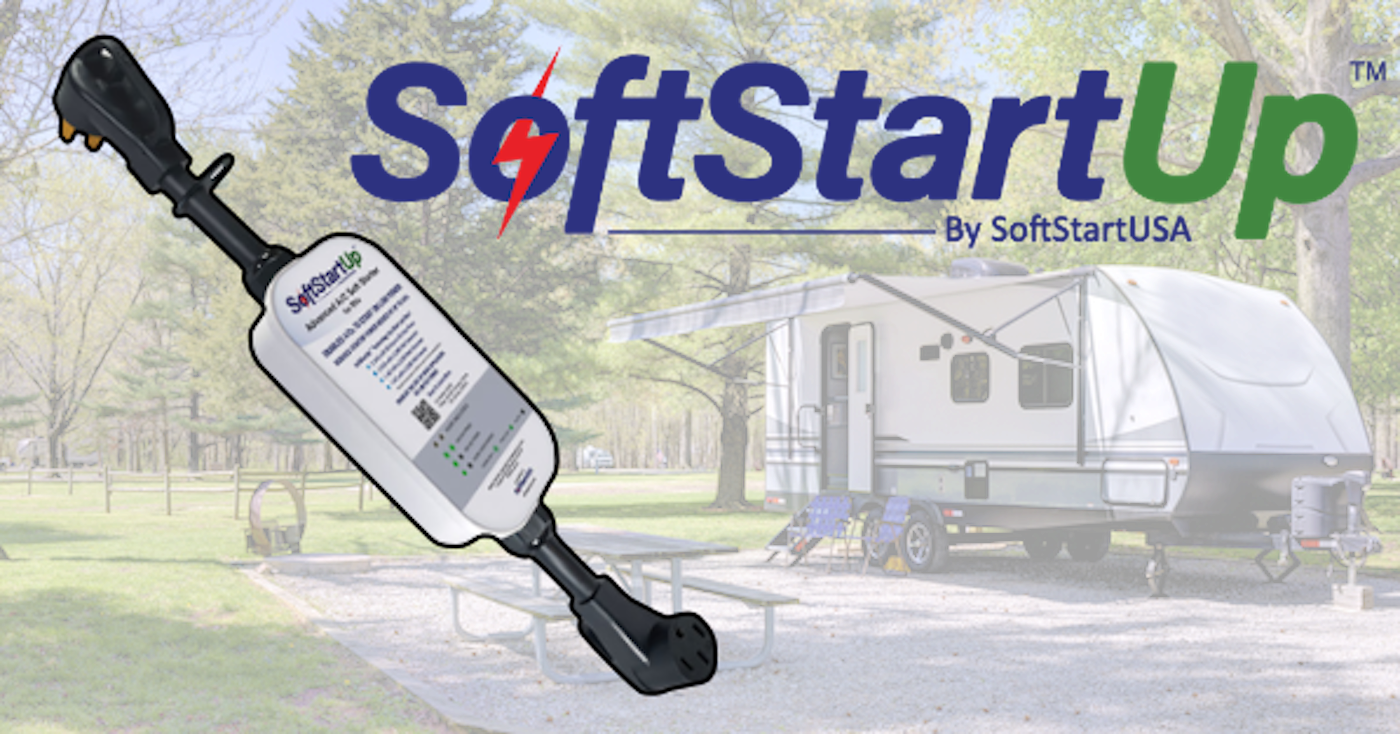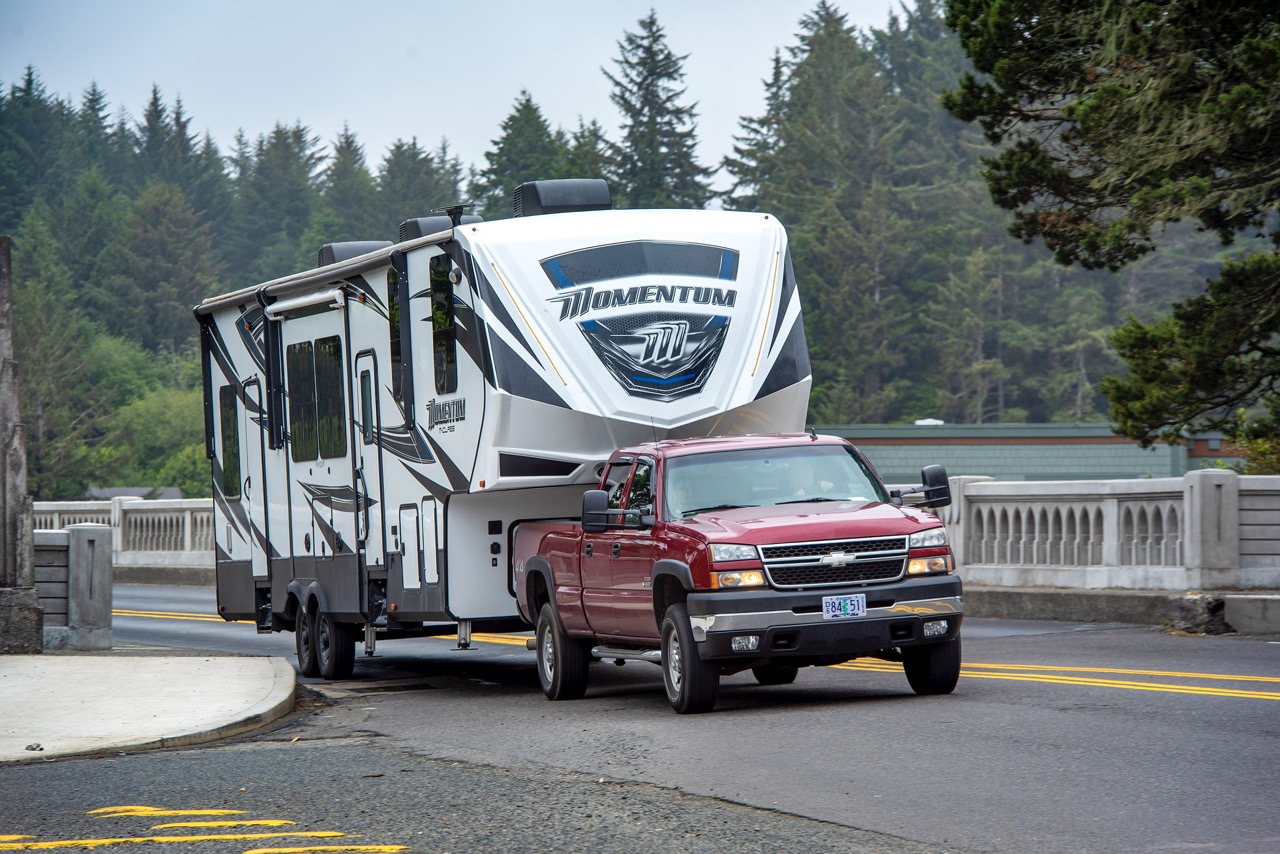
Motorhomes are a fun and convenient way to travel. However, when you purchase something as expensive as a motorhome, you want to know exactly how long the unit is going to last.
The average motorhome can last for anywhere between 10 and 30 years. Where you motorhome lands in this range will depend on any incurring damages and maintenance. Working continually to keep your motorhome in good condition will help it last for a longer amount of time.
What kind of maintenance can you do in order to increase the longevity of your motorhome? In this post, we will be discussing problems that might limit the life of your motorhome and maintenance work that will help to lengthen your motorhome’s life. Let’s dive in!
Problems that Limit the Life of Your Motorhome
Motorhomes are like people, all of them are different!
What does this mean for the problems that might affect the longevity of your motorhome? Well, this simply means that you may not experience all of the problems listed below or you may even experience alternative problems not mentioned in the following list.
Tire Blowout
One of the most common problems that occur in a vehicle as large as a motorhome is a tire blowout.
A tire blow out occurs when the overall air pressure of the tire decreases rapidly. This often occurs when traveling at high speeds and when there is lots of weight on the tire.
Tire blowouts while common, are in fact quite dangerous. Handling a tire blow out while traveling down the road requires the driver to be calm, collected, and to understand how to maneuver the vehicle correctly and safely.
The first thing to remember when dealing with a tire blow out is not to step on the brake pedal. Doing so will most likely result in you losing control of your vehicle. Keep you and your passengers safe by accelerating slightly and gaining control of the vehicle and its direction.
Want to know how you can handle a tire blow out in your motorhome? Watch this video below and learn everything you need to know about handling a tire blow out!
Sewage Clogs/Malfunctions
As you may already know, motorhome sewage systems operate a little differently than a residential sewage system. In fact, there are several different types of sewage systems that come standards in most motorhomes.
The most common type of toilet found in motorhomes is what we call the Gravity Flush. Waste is sent to the sewage system through a hole in the bowl of the toilet and does so by the force of gravity.
The second type of toilet you may find in your motorhome is called a Macerating Toilet. This toilet works by breaking down waste by sending it through several motorized blades prior to entering the holding tank.
While this toilet type may seem pointless, macerator toilets make dumping your sewage much easier and actually reduce some problems such as “mounding” that could occur in a gravity toilet.
However, while macerator toilets do eliminate the mounding that may occur in gravity toilets, in the event the blades break or simply quit working, you are in store for a less than desirable Saturday project.
The third type of sewage system in a motorhome is called a Cassette Toilet. Cassette toilets are more likely to be found in Class B motorhomes or in smaller Class C motorhomes.
A cassette toilet is permanently installed in the motorhome above a removable holding tank. This tank can be removed by hand and dumped separately from the motorhome.
Read this RV Toilet Buying Guide to learn more about the different kinds of toilets in motorhomes.
No matter what kind of toilet you have installed in your motorhome, it is usually more desirable than using the bathroom in a public outhouse at the campsite. However, when certain problems arise with your motorhome’s sewage system, you may be left with no choice but to use the stinky, single-stall of doom at the campsite.
Some common problems that can arise in your motorhome’s sewage system are clogs. Because a motorhome sewage system is more sensitive than that of a residential system, clogs are unfortunately a common occurrence.
Minimize the number of clogs in your motorhome by informing guests and children not to put trash in the toilet and by using the proper kind of toilet paper. Be sure to only use RV Toilet Paper in your motorhomes toilet. This RV toilet paper can be purchased at almost every camping supply store and can even be found in most grocery stores.
Roof Leaks
Another problem almost every single motorhome owner will have to deal with is roof leaks.
Why are roof leaks so common in motorhomes? A motorhome is basically a home on wheels. Because motorhomes are built with less integrity than a residential home to be more mobile and are constantly being exposed to the elements, the roof sealant is likely to wear down much faster and leads to leaks.
While a leaky roof may not seem to be a significant problem. Water getting into your motorhome can lead to severe water damage and mold or mildew growth. Both of these problems are not only going to depreciate the value of your motorhome, but they can make it unsafe to travel or even be in.
Be prepared for a leaky roof before you hit the road by bringing one or two rubber roof patches. A rubber roof patch is easy to install and provides a quick fix for the roof of your motorhome. My favorite rubber patch kit can be found on Amazon by clicking here!
Another method of stopping your motorhome’s roof from leaking is with Sealant Tape! Sealant Tape is quick, easy, and solves the problem just like that! Click here to find high-quality sealant tape on Amazon!
Electrical Problems
As I said above, motorhomes are constantly being exposed to the elements and are therefore more likely to experience frequent damages.
In your small (or maybe not so small) motorhome there is tons of electrical wiring that powers things throughout the entirety of the unit. There are many different things can occur that may cause damage to your motorhome’s electrical system.
When we store our motorhomes in the winter, mice and other small animals may find their way inside for warmth. However, when these little creatures get inside our motorhomes, they tend to chew on the wiring inside, stopping things from working properly.
Need some help keeping mice from chewing up your motorhome’s wiring? Watch this video from RV Education 101!
Another problem that could affect your motorhome’s electrical system is electrical surges.
An electrical surge can occur whenever a large amount of electricity is sent through your motorhome’s electrical system. This may result from a nearby lightning storm or when an appliance using great amounts of power is turned off.
Protect your motorhome’s electrical system by using a surge protector when plugging into a hookup at the campsite. Buy the Surge Guard 44270 on Amazon, and use it the next time you go camping and keep your motorhome safe!
Burst Water Lines
When you are traveling to your dream vacation spot, the last thing you want to happen is a burst water line or pipe.
A broken water line leads to extreme amounts of water damage throughout your entire motorhome and can render your kitchen and bathroom unusable.
What causes a water line to break? Well, the most common reason motorhome pipes burst is from an owner overlooking or skipping a step in their maintenance routine.
Most of the time, motorhomes are only used during the summertime and are stored during the winter months. However, if there is water left in the pipes or tanks during those winter months, the water will freeze and it will expand causing extensive damage throughout your motorhome.
How do you prevent serious damage from a burst water line in your motorhome? Proper maintenance!
No matter what problems that occur while you are on the road, keeping proper maintenance of your motorhome will help ensure that the problems are minimized and easily solved.
Maintenance Work to Extend the Life of Your Motorhome

So what kind of maintenance work can you do in your motorhome in order to minimize problems while on the road? The routine maintenance you do on your motorhome will take place in multiple areas of the motorhome and will need to be done more frequently in some places than others.
Seasonal Maintenance

As I mentioned above, motorhomes are used most often during the warm summer months and are then put in storage for the remain colder months of the year.
Before you purchase a motorhome, consider where you will be able to store or keep the unit for the winter months. Will this storage be indoors or outdoors? Heated or not?
Keeping your motorhome out of the harsh elements will help to protect the unit and to increase its overall longevity. For this reason, if you have access to indoor storage it is highly suggested that you utilize it.
However, for those of you who are unable to find indoor storage, the maintenance you do in preparation for these colder months is crucial to extending the longevity of your motorhome.
First and foremost, the most important winter maintenance you can do is draining all of your tanks. If water is left inside the tanks, water lines, pipes, or water heater and temperatures drop below freezing the water will expand and pipes will burst.
In order to keep your pipes from bursting, open all of your faucets, showers, or tanks and run the pump until no more water comes out. After turning off the pump, consider going under the motorhome and opening the tank drainage valve and let it drip dry for some time.
Once you are sure that the tanks and pipes are all drained, close the tanks and add anti-freeze into the tanks, lines, and drains (this includes your toilet). Find Camco’s RV Antifreeze Concentrate on Amazon by clicking the link!
Next, be sure to disconnect the battery (or batteries) from the motorhome. Leaving the battery connected or out in the cold is likely to damage the battery beyond repair. Save yourself the cost of a new battery and store it somewhere warmer.
After removing the battery from your motorhome, begin inspecting your motorhome for any holes or broken seals. You should not only inspect the sides of the motorhome but the roof and the underside as well.
If you find any holes or broken seals that could allow rodents or water to find its way inside the motorhome, be sure to seal those areas.
After sealing your motorhome off from the elements, be sure to place something in your motorhome to keep the air smelling fresh.
Listen to this video on easy ways to make your motorhome smelling pleasant for your next adventure.
Content courtesy of Avalon RV Center.
Want an all natural air purifier to use in your motorhome? Try Bmbu’s Bamboo Charcoal Air Purifier!
The final step in preparing your motorhome is covering the unit!
If you are storing your motorhome outdoors for winter storage, look for a cover made specifically for motorhomes. Motorhome covers keep the elements from ruining your motorhome and are designed to wick moisture out of the unit rather than trapping the moisture inside.
Try out the ADCO Designer Series on your motorhome this winter! This product is made for motorhomes between 25 to 43 feet long!
While covering your motorhome for winter is not necessary, doing so will help to ensure that your motorhome lasts longer.
Planning on using your motorhome during the winter months? In order to do so, you will need to winterize your motorhome.
What does winterizing your motorhome mean? Winterizing is simply preparing your motorhome and all of its amenities (such as water lines and tanks) for use in the cold.
Interested in learning how to make winter camping more enjoyable for you? Watch this couple as they take their motorhome on an adventure in the colder months!
Tire Maintenance
Your tires carry you and your motorhome everywhere you go, this makes it extremely important to keep your tires in good shape.
Before every trip you take, there are two things to look for on your tires as part of proper maintenance. What are these two things? Tire pressure and wear and tear.
Be sure to check the air pressure in each tire and to compare it with the suggested tire pressure on the tire pressure plate on your motorhome. (You can find the tire pressure plate on the driver’s side door in most motorhomes).
While driving on the road be sure to consider how the weather may be affecting your tires. For example, in extreme heat, the air in your tires expands and raises the air pressure.
This increase in air pressure can lead to a tire blow out. Keep yourself safe by checking the air pressure in your tries frequently, especially during those warmer days.
Keep track of the age of each of your tires and continually check them for wear and tear or other signs of damage. When a tire looks worn out, change it as soon as possible in order to avoid either a flat or a tire blow out while on the road.
The final bit of maintenance regarding your motorhome’s tires is a routine tire rotation. If you are like me when I first started traveling in a motorhome, then you probably don’t know what it means to rotate your tires or why it is an important step in your motorhome’s maintenance.
So first, what does a tire rotation even mean?
“Tire rotation means periodically changing the position of each of the tires on your vehicle. You should rotate your tires as recommended by the vehicle manufacturer, or every 5,000 miles.”
BridgestoneTire.com
Now that we know what it means to rotate your tires, it leads us to our second question. Why is it necessary to change the position of your vehicle’s tires?
When we are traveling down the road, certain tires receive more wear than others depending on where they are placed. By moving where your tires are located frequently, the wear is more evenly spread out and tires last longer.
Another benefit of rotating your tires is that you are able to see any severe damage that may require the tire to be replaced.
Learn more about rotating your tires on Bridgestone Tire‘s website!
Bathroom Maintenance
None of us want to use a smelly bathroom while traveling down the road. Maintaining your motorhome’s sewage system is important not only in keeping your system in use but also to keep you healthy!
In order to keep your motorhome bathroom from smelling too bad, you can add some motorhome toilet chemicals. These chemicals help to break down toilet paper and other waste in your motorhomes black tank, all while minimizing any odors.
You should add these chemicals to your toilet every week or two in order to keep a properly working sewage system.
Don’t want to get too close to your stinky motorhome’s toilet? Use these RV Treatment Drop-In Tabs to help you motorhome’s bathroom smelly citrusy fresh!
Another way to maintain your motorhome’s toilet and sewage system is by regularly dumping the black tank. However, this does not mean you should be constantly emptying your motorhome’s black tank.
Dumping your black tank too often let’s all the liquids out, resulting in not enough to remove the solids from the tank. A rule of thumb is to dump your black tank when it is at least 3/4 full.
Experiencing trouble with your motorhome’s toilet? Watch this video to troubleshoot what you can do to fix it!
Besides caring for the toilet in your motorhome, you should also be doing maintenance on your motorhome’s shower.
After each use of your shower, be sure to wipe off or dry the shower area (this includes the showerhead). Doing so will help you prevent any mildew or mold from developing in your shower.
Once you return home from each of your trips, be sure to thoroughly clean the motorhome’s shower and sink. While cleaning your motorhome, if you see any leaks or cracks, repair them immediately. As we learned above, a small leak can lead to big problems and should, therefore, be repaired as soon as possible.
Exterior Maintenance
While the exterior of your motorhome may not be on the list of most important maintenance, it should be. Properly maintaining the exterior is one of the most important things you can do in order to extend the longevity of your motorhome.
The first step of exterior maintenance should include cleaning the windows and the window seals on your motorhome. We do this in order to remove dust, debris, or other items that might begin to break down the rubber window seals.
Simply take a plastic scraper and run it under the rubber sealing after each trip. After cleaning out the rubber sealing, be sure to press down on the rubber to reseal the edges. If you notice in cracks in the rubber, consider going over them with cocking or another sealant to prevent any water from getting through.
The next step in maintaining the exterior of your motorhome is washing the walls. Not only does this help extend the life of your motorhome but it is also beneficial for the environment! When you travel to a new place letting an invasive species hitch a ride on your motorhome can have serious environmental impacts.
Not to mention that leaving dirt, debris, and other grime on the outside of your motorhome can lead to the rusting and corrosion of the walls and lead to other elements finding their way into the interior of the motorhome.
In order to protect the interior of your motorhome, you first have to take proper care of the exterior!
Engine and Systems
Like all the other bits and pieces of our motorhome, the brakes and brake pads will eventually begin to BREAK down.
Be sure to check the status of the brakes on your motorhome frequently and if needed replace them. This work is similar to that of any other vehicle and can be done yourself. However, you are able to hire a mechanic to change out your brake pads if you are unable to yourself.
Potentially one of the most important parts of your motorhome is the slide outs. Without a properly functioning slide out, your living space can be severely limited.
Keep your slide outs in top condition by frequently lubricating the mechanism. This can be done with WD-40 or any other mechanical lubricant. (Order your WD-40 on Amazon by clicking here!)
Another piece of your slide out that begins to break down over time is the weather sealing. This rubber sealing is exposed to the sunlight and to frequent movement. Apply a UV Protectant Spray such as TriNova UV Protectant to help the rubber sealing last longer on your motorhome.
Like any other vehicle, a motorhome needs its oil changed frequently. While the manufacturer may have listed a specific mileage at which you should change your motorhome’s oil, many motorhomes need their oil changed every 5,000 miles or so.
Motorhome Miles

One of the first things you look at when purchasing a new car is the current mileage.
Why do we do this?
Well, when it comes to cars, it is common knowledge that after 200,000 or so miles, problems will begin to arise more frequently.
The same can be said for motorhomes as well. If you keep up with your motorhome’s maintenance needs, you can expect it to last until at least 200,000 miles.
Once your motorhome reaches this literal milestone, you should begin to watch closely for any small problems that may arise.
Above I mentioned that on average motorhomes last anywhere between 10 and 30 years. The most commonly accepted “age” for motorhomes to last is 20 years.
If your motorhome is not quite to 200,000 miles but is nearing 20 years old, chances are wear and tear have already begun to affect your motorhome.
This wear and tear may result in ripped upholstery or slight engine problems. If you see something that seems problematic, be sure to repair it immediately. Doing so will help you to avoid larger, more expensive problems.
Motorhome Depreciation
Unfortunately, no matter how well you take care of your motorhome, there is going to be a significant depreciation.
Depreciation is what we call the process of a product (such as a motorhome) losing value over time and after use.
But what exactly causes motorhome depreciation and how quickly does your motorhome depreciate?
As time passes, manufacturers produce newer, more modern motorhomes. This lowers the demand for older models and subsequently the price as well.
The following chart compares the depreciation of the different classes of motorhomes. With this chart, you are able to see what percentage of the original purchase price is lost over certain periods of time.
| Type of Motorhome | After 3 Years | After 5 Years | After 10 Years |
|---|---|---|---|
| Class A | 43% | 66% | 75% |
| Class B | 33% | 49% | 62% |
| Class C | 26% | 75% | 88% |
Content courtesy of GoDownSize.com.
Another factor of depreciation is how well a motorhome is used. Wear and tear or other signs of use can severely drop the price on your motorhome and result in significant depreciation.
Conclusion
In this article, we have explored the problems that may limit the life of your motorhome, maintenance you can do in order to increase your motorhome’s longevity, and we have seen how the worth of your motorhome depreciates over time.
Sadly, no matter how much work we put into maintaining our motorhome, its worth will greatly depreciate as time passes. However, if you are hoping to keep your motorhome until it reaches the end of its lifetime, you should be able to enjoy many years of adventuring.
While the typical lifetime of a motorhome is around 20 years or 200,000 miles, if you follow a thorough maintenance routine, you can greatly increase the longevity of your motorhome.





Also be aware that if your home is 10 or more years old you may not be able to find a shop that will work on it, we have 1995 31 ft that only has 19,ooo miles is well maintained but have found that no dealers will do maintainance on it !
Very good Article. I also think as time goes on, there could be length restrictions in many Parks. The shortage of qualified RV Techs is going to prolong repairs even further in the future. of RV Repair That Class B can be used as a Daily Driver, which in itself is a plus.